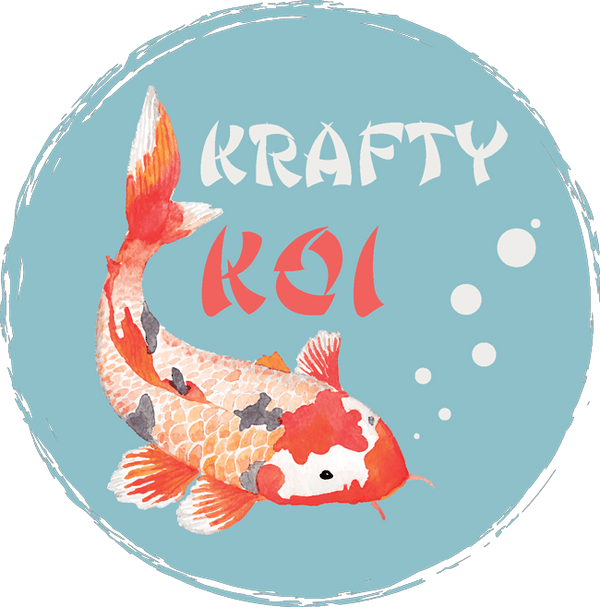Colours, Scales & Markings
Koi, or nishikigoi as they are more properly known, exhibit a dazzling array of different colours, patterns and scalations. The possibilities are endless but breeders have established certain desirable traits and identifiable combinations of traits in order to classify a number of varieties. If you have become baffled by the world of koi then here are the principle varieties to look out for.
KÅhaku
KÅhaku are koi with white skin featuring large red markings. The best KÅhaku have blemish free white skin with deep red, evenly distributed patterns. KÅhaku appropriately means red and white. This was the first ornamental variety to be established in Japan.
TaishÅ Sasnhoku (Taisho Sanke)
TaishÅ Sasnhoku (or Taisho Sanke) are similar to KÅhaku but also boast small black markings which are called sumi. Prized fish possess the same qualities as KÅhaku but with the addition of the black markings. There are several variations of the Sanke including Doitsu Sanke, Maruten Sanke, Tancho Sanke and Din Rin Sanke.
ShÅwa Sanshoku (Showa Sanke)
ShÅwa Sanshoku (or Showa Sanke) are koi with a black base and red and white markings. These fish are commonly known simply as Showa and can be confused with Taisho Sanke. However with Showa the black markings wrap all around the body instead of appearing only on the top and there will always be black on the head. The most valued Showa have colours balanced evenly about the body with clearly defined edges to each colour. Variations include Tancho Showa, Maruten Showa, Gin Rin Showa, Doitsu Showa and Kin Showa. ;
TanchÅ
TanchÅ describes any koi with a single red patch on its head. Sub varieties include Tancho Showa, Tancho Sanke, or Tancho Goshiki but the term is usually used to describe Tancho KÅhaku. This variety is named after the Japanese crane which has a red spot on its head. The quality of this variety is determined by the symmetry and location of the red marking.
Chagoi
Chagoi means tea-coloured but these koi can vary from pale olive green or brown to copper and deep shades of orange. They feature solid colour and a subtle but noticeable reticulated net pattern. They are valued for their friendly nature which makes them amenable to hand feeding and they tend to be large in size.
Asagi
Asagi are koi which have a blue net pattern on their backs and red or orange on their undersides, gill plates, fins and body. The most prized specimens have a red pattern which does not extend above the lateral line.
Utsurimono
Utsurimono are black koi with either white (Shiro Utsuri), red (Hi Utsuri) or yellow (Ki Utsuri) markings. The resulting bi-colour pattern is often similar to a piebald horse or a bold snakeskin. This variety began with breeding of black and yellow koi.
Bekko
Bekko are white, red or yellow koi with black markings called sumi. The Japanese name means tortoise shell. These fish are easily confused with Utsuri.
Goshiki
Goshiki means five colours. These koi have a solid white base with a black and blue edging and then red and black patterns overlaying the base.
Shūsui
Shūsui means autumn green and these koi are the scaleless (doitsu) version of Asagi. Here the blue net pattern is replaced by a single row of scales along the dorsal line. As with Asagi, the belly, gill plates, sides and fins of Shusui display an orange or red pattern.
Kinginrin
Kinginrin are koi with metallic scales. The name is often abbreviated to simply Ginrin. There are Ginrin versions of almost all other varieties of koi, and they are highly sought after. Their sparkling, scales are in contrast to the smooth, metallic skin of the Ogon varieties. Recently, these characteristics have been combined to create the new Ginrin Ogon varieties. (How confusing! )
Kawarimono
Kawarimono is a generic term for any koi that cannot be identified as one of the recognised varieties. Such specimens can also be known as Kawarigoi.
Ågon
Ågon are koi with a metallic appearance and are of a single colour. The most commonly seen colours are gold, platinum, and orange. Cream specimens are very rare. The best examples benefit from unblemished skin with absolutely no marks or patterns.
Kumonryū
Kumonryū are black and white scaleless (doitsu) fish with curly patterns. The patterns are thought to be reminiscent of Japanese paintings of dragons. These koi are fascinating because they change their patterns many times during their lives. The sub variety Beni Kumonryū feature a third colour.
Ochiba
Ochiba are a light blue/grey koi with copper, bronze, or yellow patterns. They are reminiscent of autumn leaves on water. The Japanese name actually means fallen leaves.
Goromo
Goromo are white koi with a KÅhaku-style pattern featuring blue or black-edged scales but only over the red pattern. This variety first appeared in the 1950s and is a cross between a KÅhaku and an Asagi.
Hikari
Hikari-moyomono are koi with coloured markings over a metallic base.
Kikokuri
Kikokuri means sparkle and denotes a metallic-skinned version of Kumonryū.
Kin-Kikokuryu
Kin-Kikokuryu means gold sparkle black dragon and describes a metallic-skinned version of the KumonryÅ« but with a KÅhaku-style red pattern. There is a lot to take in isn't there? Perhaps you can now start to recognise the many different varieties of koi. If you are interested in keeping koi then it could be a good time to decide which varieties you favour and would like to keep or breed. With the fabulous range of koi food here at Krafty Koi you are sure to nurture the finest specimens.
